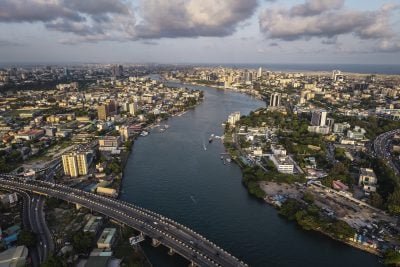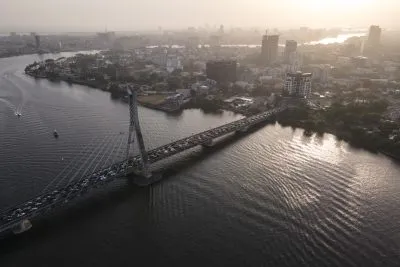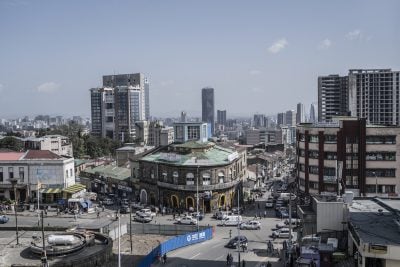Despite a familiar look to our table of Africa’s Top 250 companies, there is plenty of evidence to suggest that momentous changes are on their way.
South African companies remain in a league of their own but are growing more slowly than their counterparts in West and East Africa. Both régions are enjoying strong economic growth and attracting a bigger share of international investment than in the past. At the same time, non-commodity sectors are becoming more important, although it remains to be seen whether this trend will be sustained in the face of any renewed boom in commodity prices.
The figures in our tables are based on the market capitalisation of companies on 31st March 2013. On that date, Africa’s 250 biggest listed companies were worth a combined $697bn, up from $653bn in our 2012 survey. South Africa continues to account for the lion’s share of this figure, with a total value of $519bn, although this includes some international giants with multiple listings in stock exchange around the world. Yet the balance of economic power is beginning to change. West Africa firms in our table are now worth $67bn, equivalent to 10% of the total and worth a massive 45% more than in our 2012 listings.
Eastern Africa has performed even more strongly. Although the region’s biggest companies contribute just $19bn, or 3% of the total worth of the African 250, this is a 57% increase on the 2012 figure. At the other end of the scale, the value of North Africa’s biggest companies has fallen by 11% since our last survey. If current trends are sustained over the next year, West Africa will overtake North Africa in importance in our 2014 table. Nigerian companies in our 250 are already worth more than either their Egyptian or Moroccan counterparts.
There has been a big change in the representation of different sectors in our table. Mining and metals companies made up 32.67% of the value of our Top 250 African companies in 2012 but this figure has now fallen to 24%. Given criticism that Africa’s economic growth is too heavily based on the export of raw materials, many may regard this rebalancing as a positive development. This is still the biggest single industry but the total market capitalisation of the 250 is now spread more evenly across different sectors. Banks and financial services now account for 17.3% of the total; food and beverage consumer goods 13.4%; and the construction industry 5.4%. It is interesting that the total value of listed telecoms companies has fallen from 8.62% of the total to 7.8%, as some of the lustre has fallen off telecoms stocks.
Mining challenges
As last year, the nine biggest African companies are all listed in South Africa. Indeed, there are now 21 South African companies among the continent’s top 25, one more than last year. The remaining four are Nigeria’s Dangote Cement and Nigerian Breweries;
Orascom Construction of Egypt; and Morocco’s Attijariwafa Bank. The South African firms are examined in our dedicated section on the country but it is worth noting that the country has maintained its dominant representation in our table in the face of difficulties in the mining industry, including slower than anticipated growth in demand from China.
Mining companies have also been affected by industrial action in South Africa, which produced less platinum in 2012 than at any time since 2001. Mining sector trades unions called strikes in protest at planned cuts in production but the strikes themselves also helped to cut output. The campaign to nationalise the country’s mining industry has gained little ground over the past year but some significant voices have thrown their support behind a demand that African governments should take a stake in any new mining projects. Linah Mohohlo, governor of Botswana’s central bank and a member of the Africa Progress Panel, has called for national governments to hold at least 50% equity in any new mining schemes. She said:
“As a former central banker, I believe that only central banks can and should handle the revenue flows that stem from mining. The country, or the government, must receive more of the revenue flows out of a project than the company does. The state’s role is far greater than just being a partner that extracts profits and collects taxes.” International mining corporations will oppose such proposals but there is no doubt that governments need to ensure that their citizens benefit from mine development.
Inclusion criteria
Given the interconnected nature of global companies, it is worth explaining our inclusion criteria. Our table incorporates companies that are listed on African stock exchanges, including those that are listed on other bourses elsewhere in the world. This is of particular relevance in the mining industry, where many of the global giants are listed on two or more of the Johannesburg, London, Sydney and New York exchanges.
Some of the companies listed on African domestic bourses operate in many countries across the continent. We do not list wholly stateowned companies for the simple reason that they have no traded value and therefore cannot be ranked alongside listed firms. Our criteria also exclude companies wholly owned by private individuals or families, and also wholly owned subsidiaries of international companies that are not listed in Africa.
As a result, state-owned oil companies such as Sonatrach of Algeria and Sonangol of Angola are not included in our survey, despite the fact that any initial public offering (IPO) of stock in either company would see them placed near the top of our table. Finally, Suez Canal Authority and South African utilities such as Eskom and Transnet are disqualified, although they are among the biggest economic organisations in Africa. As a result of the activities and influence of such companies, capital markets are not always indicative of the size or influence of any particular national economy in Africa, unlike in other more liberalised markets. The continent’s biggest countries should also benefit from continued relatively strong economic growth of about 5-6% over the next few years. Antoinette Sayeh, the director of the IMF’s African Department, said recently: “Sub-Saharan Africa will be among the fastest growing places in the world … second only to developing Asia.” Although there is no sign of the continent as a whole enjoying the kind of double-digit growth that propelled the Chinese economic boom for so long, growth levels are consistently about 2-3% above population growth and so GDP per capita is increasing. The IMF also forecasts that continental inflation will fall below 6% a year by the end of 2014, from 10% in 2011 and 7.9% this year. This improvement has received relatively little press coverage but is a huge step in the right direction, as it will make it easier for companies to plan investment and price structures.
However, Sayeh warns that fluctuating commodity prices pose a real risk to growth. Speaking in May, she said: “Given the presence of risk, fast-growing countries with low policy buffers should give priority to rebuilding buffers to handle adverse external shocks, while safeguarding long term growth and developmental needs … Countries with limited policy buffers and reliant on a narrow range of export commodities, or more directly exposed to sources of risk, could experience more severe adverse effects.” There are always risks to the economic stability of any nation but these should not hide the fact that African economies as a whole are entering the most optimistic period of development since the euphoria of the 1960s post-independence years. If managed correctly, this should help nurture the growth of more companies in a wider range of sectors. If badly handled, it could come to be seen as a short-lived boom.
Want to continue reading? Subscribe today.
You've read all your free articles for this month! Subscribe now to enjoy full access to our content.
Digital Monthly
£8.00 / month
Receive full unlimited access to our articles, opinions, podcasts and more.
Digital Yearly
£70.00 / year
Our best value offer - save £26 and gain access to all of our digital content for an entire year!
 Sign in with Google
Sign in with Google 


